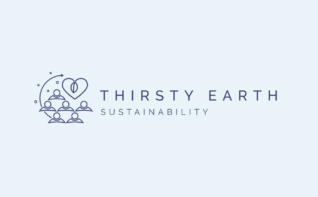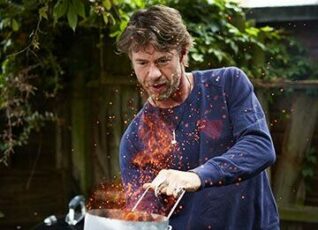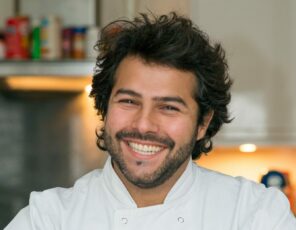Meet the Producer // McManis Family Vineyards
Latest news • 20/05/2021
McManis Family Vineyards has been making superb wines in California for five generations. We speak to the team at MFV to find out more about their winery, vineyards, sustainable practices and hopes for the future.
Tell us about your vineyards at McManis. What grapes do you grow, and how does the climate and terroir help the varieties to flourish?
McManis Family Vineyards grows most of its fruit in six American Viticultural Areas (AVA’s) – including River Junction, Clarksburg, Borden Ranch, Clement Hills, Jahant and Mokelumne River. Each of these AVA’s provides us with options of varying climates and soils so we can differentiate the varietals that we plant within each vineyard.
Nestled between the cool confluence of the Stanislaus and San Joaquin rivers south of Lodi, the River Junction Appellation comprises 1,300 acres, the third smallest in California. The river basin, consistently 2-5 degrees cooler than the surrounding farmlands, combined with the sandy loam soils unique to the area, is ideally suited to growing premium quality grapes. McManis Family Vineyards grows Chardonnay, Pinot Grigio, Pinot Noir, Viognier, and Muscat Canelli in this AVA.
Established as an American Viticultural Area in 1985, Clarksburg is marked by its location along the Sacramento-San Joaquin River Delta, which pulls in ocean breezes and creates a cool maritime climate. The growing region has dense clay and loam soils. The McManis family grows about 220 acres of wine grapes with Chardonnay, Chenin Blanc and Sauvignon Blanc planted across their Northridge and Ridgecrest vineyards.
Located west of the Amador County line, Borden Ranch AVA is the most topographically diverse sub-appellation in the larger Lodi AVA. With elevations ranging from 73 feet to 520 feet above sea level, the region features well-drained alluvial soils comprised of cobbles, clay pan, and clay loam, best for growing structured red wines. McManis’ Liberty Vineyard and Sierra Loma Vineyard reside in the Borden Ranch sub-AVA. They grow Cabernet Sauvignon, Merlot, Petite Sirah, Petit Verdot, and some Pinot Noir in these vineyards.
Located in the east part of the larger Lodi AVA, Clements Hill is characterized by rolling hills and cliffs at the base of the Sierra Foothills. The Mokelumne River flows through the region and a variety of microclimates exist within the hills. There are granite and volcanic soils below the alluvial top soils, and the appellation is recognized for producing red grape varieties such as Zinfandel, Syrah, and Petite Sirah. McManis’ Lone Oak Vineyard sits within the Clements Hills sub-AVA, where they grow Cabernet Sauvignon, Zinfandel, and Petite Sirah.
Jahant is the smallest of the Lodi appellations and is most aptly defined by its unique pink Rocklin-Jahant loam soils, so much so that the boundaries of the appellation are marked by the extent of these soils. Jahant’s climate is cool and dry due to its close proximity to the Mokelumne River, Sacramento Delta, and its relatively low elevations, ranging from 10 feet to 100 feet. McManis Family Vineyards produces Pinot Noir and Petite Sirah in the Jahant Appellation at their Creekside Vineyard.
The Mokelumne River is an American Viticultural Area located in San Joaquin County, California. It is located in the southwest part of the larger Lodi AVA and includes the city of Lodi and the towns of Woodbridge and Acampo. The AVA is named after the Mokelumne River, which drains out of the Sierra Nevada Mountains, into the San Joaquin River, and passes through the heart of the appellation. The wine region includes a portion of the lower Mokelumne River and the Cosumnes River, a tributary. The soil in the area is alluvial fan deposits of sand and loam. Ample rainfall and soil moisture retention allows most grape growers to farm without the use of irrigation. McManis’ Wishek Vineyard and Aberle Vineyard sit within the Mokelumne River sub-AVA; the family grows Cabe
Tell us about your eco, sustainable and ethical practices
At McManis Family Vineyards, we have chosen the “Lodi Rules Program” for certifying our vineyards as sustainable. It is a standard of farming practices that not only protects our land, our workers and the community that we live in, but produces a higher quality of wine that reflects the place and the people that create them.
Although all of our farming practices are the same in all of our vineyards, we have hired a certified independent third party to grant us certification on each and we are proud to say that every one of our vineyards are now certified. This certification verifies the farming practices that my Father instilled in me about being good stewards of the land and good partners to the people we work with every day
The following are just a handful of specific practices that we follow in our vineyard operations:
- We use two different types of cover crops; for the young 1-3 year old vineyards we use what’s called a “plow down mix” which is disked in every year containing legumes (beans and peas), wheat, and barley. Our established vineyards three years and older we use a permanent brome blend of prairie and rye grasses. We also have some flowering mixes we use to promote natural predatory insects that feed on invasive insects.
- We currently have three solar systems including the winery that produce over 250 kilowatts of power.
- We recycle 100% of our wastewater at the winery and in the vineyards. The water is captured then filtered and used on the vineyards and other crops. We also capture the rainwater from the winery facility and use it on the sedan and forage crops we plant to recycle the wastewater.
- Most of our vineyards have owl boxes to help control our vertebrate pests (squirrels and gophers) so we don’t have to rely on bait to control them.
- We are now implementing electric vehicles in the vineyards to lower our carbon footprint.
If you could fix one problem in the industry today, what would it be?
Our industry is heavily burdened by regulations, taxes, tariffs and scrutiny from all angles. Our hope is that someday each of these constraints can either be lessened or simplified and streamlined so that we may continue to grow grapes and make excellent wine without so many hurdles that may prevent us from growing grapes and making quality wine at reasonable prices.
What excites you most about the future?
The worldwide wine industry continues to find ways of growing better grapes and producing better wine. Every year that clicks by, vintners make adjustments in the vineyard and winery so that future vintages are better and better. What’s really exciting is that we are able to do the same at McManis, as we control our fruit source with over 4,000 acres of vineyards under our ownership and produce our wine with state-of-the-art equipment, all in one facility. Combined with a top-flight winemaking team, we have assured our customers of being able to source a wine that maintains continuity of style, supply and quality. We will always continue to look for opportunities to further improve our grape growing and winemaking!
To what do you attribute your success?
As a family-run operation, we are heavily involved in all facets of our business – whether it be with grape growing or winemaking. Our focus of quality and value resonates from the owners down to all employees of the vineyard and winery. By being self-sustained, with the ability to grow all of our own grapes, we can ensure that only the best fruit makes its way into the winery and then into the bottle. In addition, our winemaking team has been linked together since our first harvest in 1997, thus providing over 24 years of producing wine from many of the same vineyards – year in and year out.
Elevator pitch for retailers – why should they stock your wines in 100 words or less:
McManis Family Vineyards produces one of the best quality for-the-price wines available in the world – year in and year out. Growing, producing and selling wine that is not up to our standards is not an option.
Related news




